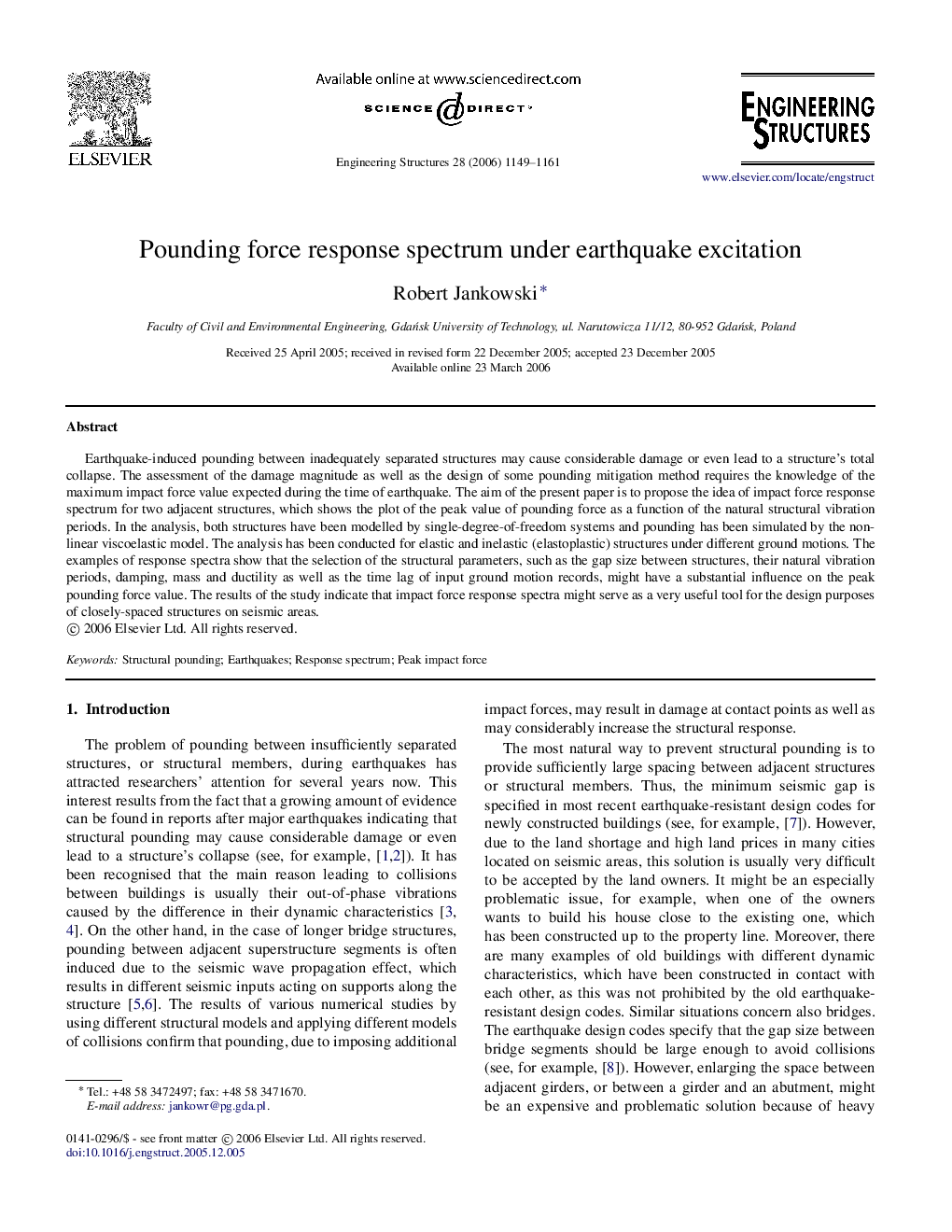| Article ID | Journal | Published Year | Pages | File Type |
|---|---|---|---|---|
| 269231 | Engineering Structures | 2006 | 13 Pages |
Earthquake-induced pounding between inadequately separated structures may cause considerable damage or even lead to a structure’s total collapse. The assessment of the damage magnitude as well as the design of some pounding mitigation method requires the knowledge of the maximum impact force value expected during the time of earthquake. The aim of the present paper is to propose the idea of impact force response spectrum for two adjacent structures, which shows the plot of the peak value of pounding force as a function of the natural structural vibration periods. In the analysis, both structures have been modelled by single-degree-of-freedom systems and pounding has been simulated by the non-linear viscoelastic model. The analysis has been conducted for elastic and inelastic (elastoplastic) structures under different ground motions. The examples of response spectra show that the selection of the structural parameters, such as the gap size between structures, their natural vibration periods, damping, mass and ductility as well as the time lag of input ground motion records, might have a substantial influence on the peak pounding force value. The results of the study indicate that impact force response spectra might serve as a very useful tool for the design purposes of closely-spaced structures on seismic areas.
